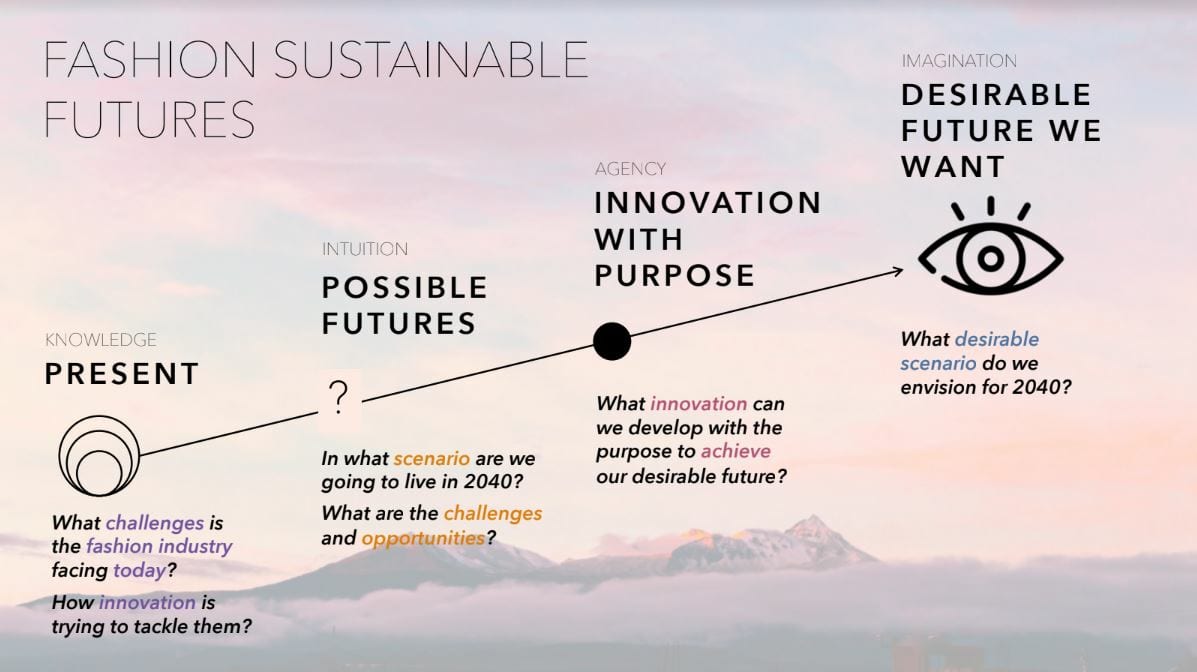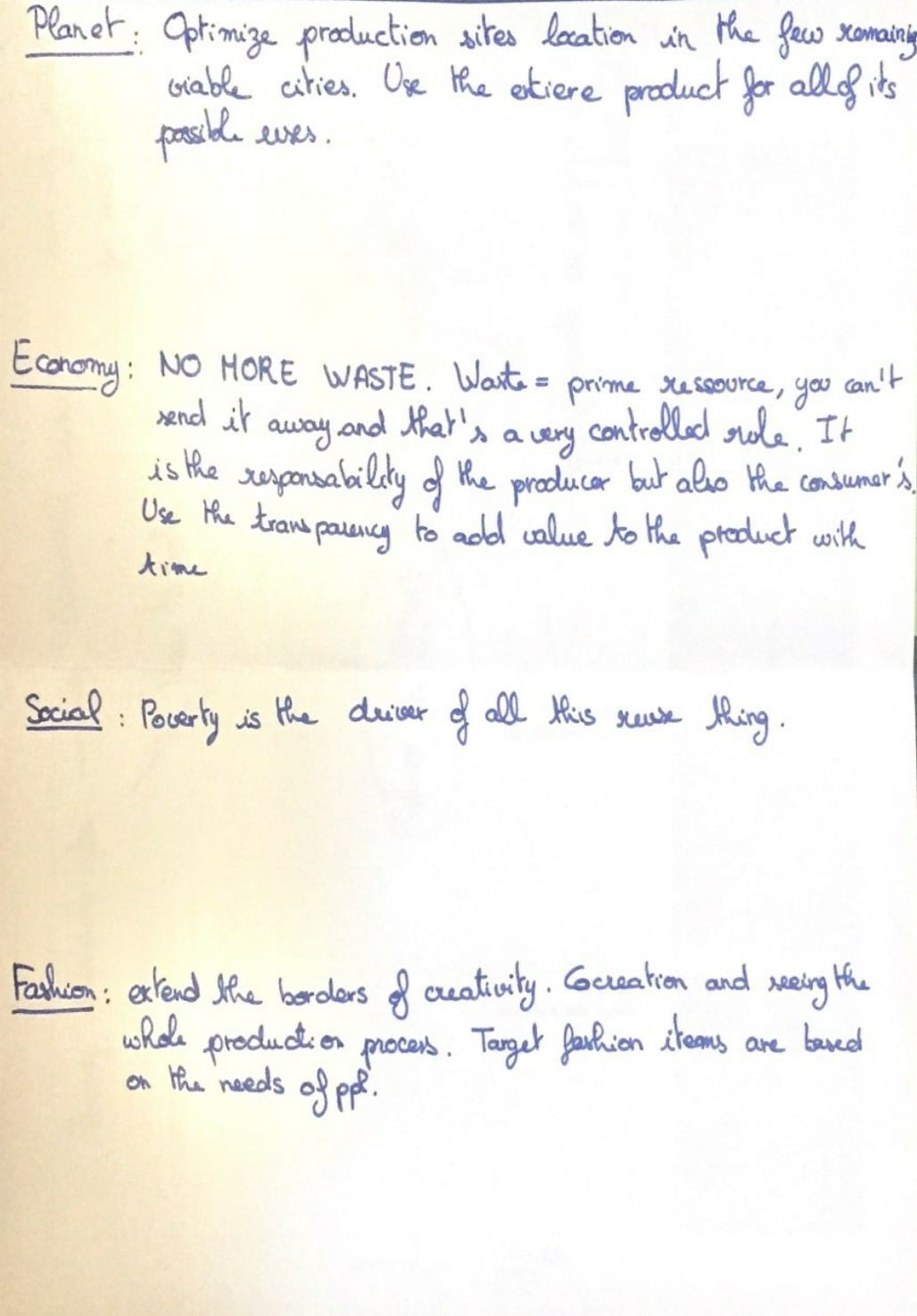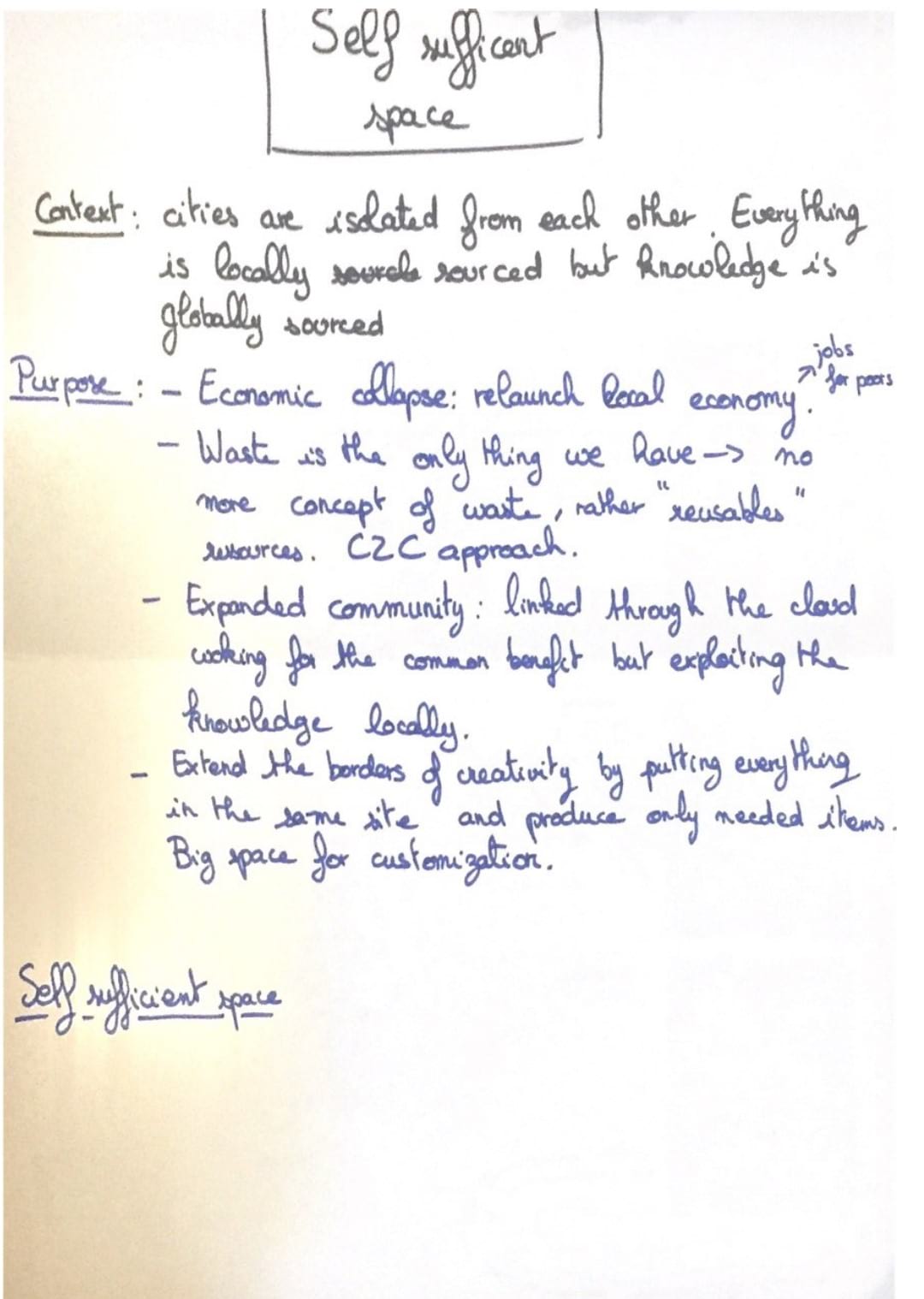Week 1: Fashion sustainable futures¶
Lecture¶
What are the challenges in the fashion industry ? We need to bring a systemic change (no short term solutions) because we are facing a lot of wicked problems. That is why we have to innovate with a purpose: so that among all the possible futures, we can go to a preferable future for 2040.

Today, the fashion industy follows a linear model: we take ressources, make a garment out of it and then waste it. New fashion production model is also characterized by the overproduction with an average of 6 collections a year compared to 2 collections some decades ago. The impacts of fast fashion on the planet are multiple:
- Water impact: one outfit composed of 1 T-shirt (27000 L), jeans (3480,5L) and shoes (8000L) requires 38 485, 5 liters of water. Fashion represents 20% of industrial pollution of waters since a lot of chemicals are used in the process.
- Biggest percentage of viscose is actually coming from trees from endangered forests and not from recycled cellulose.
- Synthetic fibers compose 60% of all fibers produced.
- The fashion production lines are very delocalized and a lot of transport is required to produce one single piece. Fashion items represent 10% of CO2 emissions worldwide due to transports.
- Importing clothing is exporting poverety, with underpaid workers (average wage is 70€ a month which is the legal minimum wage but not enough to have a dign life). The delocalization also leads to the use of toxic techniques banned in the "western world" in poorer countries.
- Fashion perpetuationg stereotypes, binarism, erasing ethnicity and cultures, cultural appropriation,
Fashion produces an incredible amount of waste before even being used, that ends up in landfills: stock fabrics, cutting waste, fiber waste and unsold products. Only 1% of fashion products are in a closed loop. After being sold, there is our waste due to the short usage cycles (garments worn 5 times in average in the UK). This is due to the lack of knowledge for good maintenance, but also due to lack of bond and attachment to the object. Donating is NOT a solution because the clothes end up in poorer countries that either do not need this amount of used clothes and will end up throwing a big part of it, or are going to sell it for very cheap prices and compete with local economy and creators.
In order to find more sustainable alternatives, there are short term solutions that are already being developped but also longer term solutions that need to be found for when the industry will have shifted.
Short term solutions include alternatives to virgin materials (recycled and bio based), reuse post consumer waste (H&M), bioplastics, biothreads (orange fiber), lab fermented materials, CO2 capturing materials, more sustainable processes (Jeanologia, CO2 dyeing, 3D design for modeling), Rental and suscription services, automation of processes (Adidas SpeedFactory)...
Long term solutions¶
 In order to find long term solutions, Adriana gave us cards with scenarios for the future. Our scenario was the survival race scenario: where humanity is dying in a hothouse, in an atmosphere of nationalism and protectionism, with automation, social precariousness, protected local brands, mandatory transparency, local design and value chains, climate refugees, social inequalities and taxing of wastes. Here is what we came out with at the end of the ideation process !
In order to find long term solutions, Adriana gave us cards with scenarios for the future. Our scenario was the survival race scenario: where humanity is dying in a hothouse, in an atmosphere of nationalism and protectionism, with automation, social precariousness, protected local brands, mandatory transparency, local design and value chains, climate refugees, social inequalities and taxing of wastes. Here is what we came out with at the end of the ideation process !


